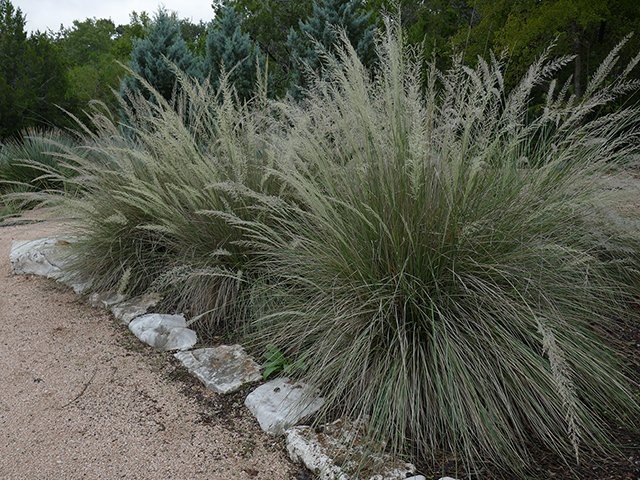Blue Muhly
Muhlenbergia lindheimeri
Family: Poaceae
A 3-6 ft., evergreen, perennial mounding bunchgrass with fine foliage and a fountain-like form. Open spikes occur in summer into fall.
Full to filtered sun, moderate water.
Native grasses are extremely important plants for wildlife: as nesting material for birds as well as native bees and other insects, as habitat for many organisms, and as food: adult insects eat the foliage, granivorous birds depend on many species for seeds, and most grass species are used as larval hosts for many species of butterflies and moths, especially skippers. Many bee species collect the pollen of many species of grasses. All can be used for desert tortoise enclosures.
Grasses also play an important role in the ecology of soil, and because they are monocots, they can be planted close to other species of plants (the nature of the root systems of monocots renders them less imposing on neighboring plants). They hold soil down and help prevent erosion. Many species are pioneer plants that convert disturbed soils into hospitable places for other plants.
Photo by Lee Page, Ladybird Johnson Wildflower Center
Muhlenbergia lindheimeri on iNaturalist
Fair to good forage for livestock and wildlife. Leaves provide nesting material for birds.
The genus, Muhlenbergia, is named for Gotthilf Heinrich (Henry) Ernst Muhlenberg (1753-1815) who was American born but returned to his ancestral Germany for schooling and later returned to America. He was an ordained Lutheran minister but devoted his free time to the study of the botany. The specific epithet, lindheimeri, is named for Ferdinand Jacob Lindheimer, a German-born botanist who collected plants in Texas in the 19th century. Lindheimer is known as the "Father of Texas Botany". There are 180 species of Muhlenbergia with the greatest number native to the southwestern United States and Mexico; there are also native species in Canada, Central and South America and in Asia.
Native from the Edwards Plateau of central Texas south to northern Mexico.



